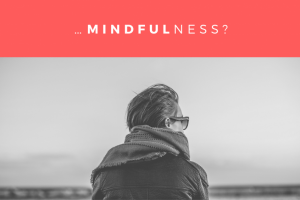An excerpt from the Crisis Trauma Resource Institute
By Shelly Qualtieri, , RSW, MA

What are some ways people practice mindfulness? Thinking about this blog post, I began speaking to friends and family about mindfulness and asking how they bring a mindful practice into their day or life. This is something I try to work on daily.
However, I quickly came to realize that people continue to have questions and misunderstandings about mindfulness. My friends and family said things like: “I don’t like yoga or meditation, and that is what mindfulness is”; “I don’t have time for more in my life”; and “What is mindfulness?”
[toggle title=”Mindfulness is “]Mindfulness is a fantastic tool that we can all use a little of in our lives, whether at work or at play. Mindfulness allows us to slow down, pause, and take the time to make clear and rational decisions. It allows us to connect to our senses rather than getting lost in trains of thought and making impulsive decisions.Mindfulness has been described as intentional communication, being consciously present and aware of how we are feeling in the moment. It allows us to understand how we can react in the moment thoughtfully and with full intention.
When we are practicing mindfully with our colleagues, peers, partners, and children, our interactions with others become different. They become intentional. Mindful communication improves our relationships and we will see personal and professional growth.
For each of us, our feelings are valid – but they are not facts, they are merely thoughts. These thoughts can fuel our emotions and create stress and reactive behaviours. We all have a variety of sources of stress, not all of which are bad. Our stress can come from our environment, our social interactions, or it can be physiological. How you see things and how you handle them will make the difference in how much stress you experience and how you incorporate mindfulness into your life.
Think of a time when you were feeling emotional about a situation at work or at home. The emotion takes over our thought process and we have a stress reaction rather than a slowed down, intentional and mindful response.
In their 2010 book, A Mindfulness-Based Stress Reduction Workbook, Stahl & Goldstein describe stress reactions as being fuelled by unconscious habitual patterns that have been learned from past challenges and experiences. These patterns can impact our lives when we are at work or with our children, can impede us from reaching personal goals, and can lead to mental and physical exhaustion or a breakdown. In turn, a slowed down, intentional and mindful response acknowledges one’s emotions and works with them rather than pushing against them.
As Jon Kabat-Zinn describes in his 2013 book, Full catastrophe living: Using the wisdom of your body and mind to face stress, pain, and illness, it is often not the potential stressor that is causing the emotionally overwhelming situation, but how you perceive it and then how you handle it. As we are all well aware, there will always be many potential stressors in our lives over which we have limited control. However, by changing the way we see ourselves in relationship to these stressors, we can actually expand our experience of the relationship, and thus modify the extent to which it taxes or exceeds our resources or endangers our well-being.
With time and practice each of us can respond to the daily work and personal stressors in our lives mindfully and work towards breaking stress reactions, which will reduce the feelings of being overwhelmed.
In his 2007 book, The Mindful Brain: Reflection and Attunement in the Cultivation of Well-Being, Dr. D. Siegel suggests that the practice of mindfulness uses the social circuitry of the brain to help us become more attuned to ourselves, which results in greater physical, psychological and social well-being. He explains that mindfulness practice can affect the prefrontal area of the brain, which has integrative functions that impact many areas of the brain and body, suggesting mindfulness has a positive influence on resilience, self-regulation, and well-being.
Being able to take the time to let go and create space to be free from our daily stressors will allow for more happiness in the long run.
So, you must be wondering how to develop mindfulness skills at work and play. Here are a few tips to start your mindfulness practice:
- Accept what you can’t change.
- Notice that you have a choice.
- Show appreciation.
- Value other people’s opinions.
- Feel gratitude.
- Practice mindfulness daily:
- a. Set an alarm on your phone – take a deep breath when it rings.
- b. Set an appointment with yourself!
- c. Place a picture on your desk to remind yourself to be mindful.
- d. Be mindful of your surroundings rather than immediately reacting.
- e. Take a small step back and reflect rather than automatically react to what’s coming at you.
Congratulations – this may have been your first step to practicing mindfulness on a daily basis.



You must be logged in to post a comment.